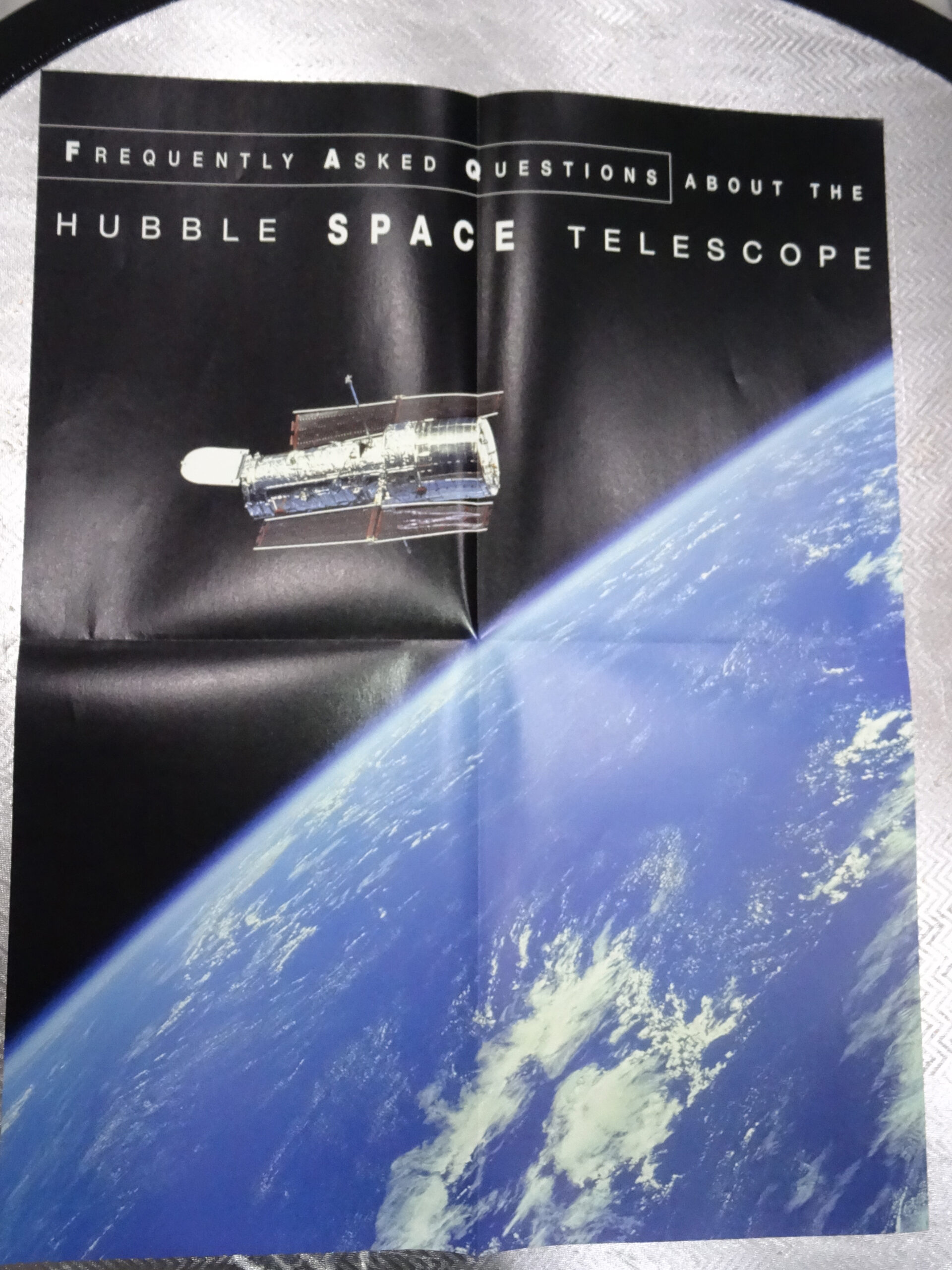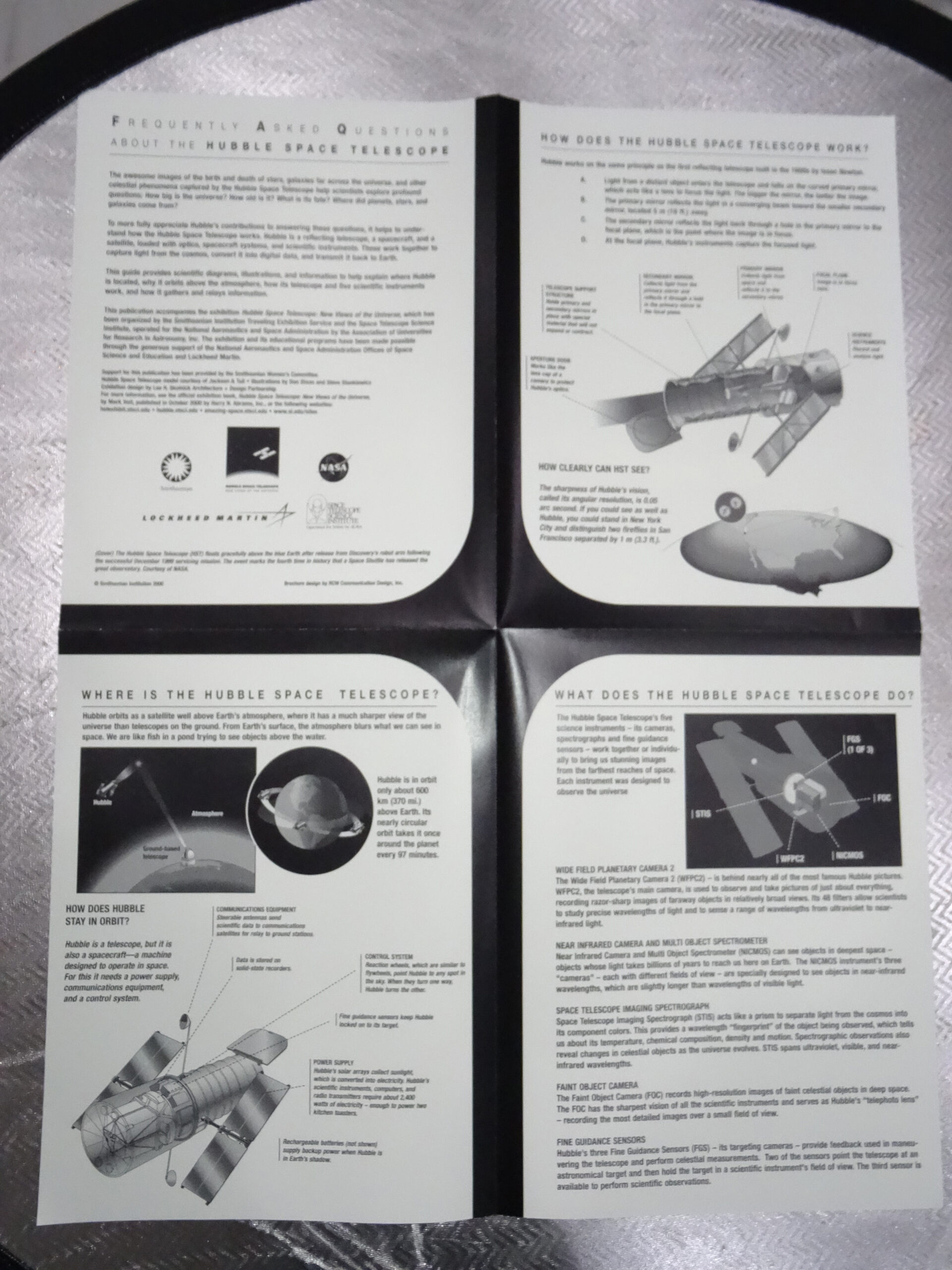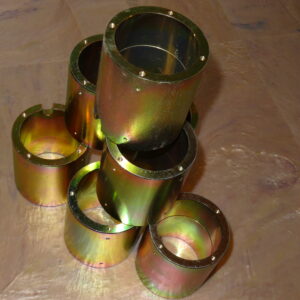Description
Hubble Space Telescope Poster Published by Smithsonian Institution 2000
This poster $75 Free Shipping
The Hubble Space Telescope (HST) is a space-based observatory that was launched into orbit by NASA in 1990. It is one of the most iconic and productive telescopes in the history of astronomy. The Hubble Space Telescope serves several important purposes:
- Astronomical Observations: Hubble’s primary function is to observe distant celestial objects without the distortion and interference caused by Earth’s atmosphere. It captures high-resolution images of stars, galaxies, planets, and other astronomical phenomena in visible, ultraviolet, and near-infrared light.
- Deep Space Exploration: Hubble has played a crucial role in deep space exploration by observing distant galaxies, nebulae, and other objects. It has helped astronomers understand the evolution of galaxies, the formation of stars, and the nature of black holes.
- Studying Exoplanets: Hubble has been used to study the atmospheres of exoplanets (planets outside our solar system). It has contributed to the search for potentially habitable planets and the characterization of their atmospheres.
- Determining the Age of the Universe: Hubble has been instrumental in refining the estimate of the age of the universe by measuring the rate of its expansion, often referred to as the Hubble constant.
- Investigating Dark Matter and Dark Energy: Hubble has been used to study dark matter and dark energy, two mysterious components of the universe. Observations of distant supernovae made by Hubble played a crucial role in the discovery of the accelerated expansion of the universe, attributed to dark energy.
- Asteroid and Comet Studies: Hubble has observed and tracked asteroids and comets, providing valuable information about their orbits, sizes, and compositions. This information is essential for planetary defense and understanding the early solar system.
- Planetary Exploration: Hubble has observed and studied planets within our own solar system, including Mars, Jupiter, Saturn, and Pluto. It has helped track atmospheric changes, storms, and the behavior of planetary moons.
- Educational and Public Outreach: In addition to its scientific observations, Hubble has contributed to science education and public outreach by capturing stunning and easily accessible images of celestial objects. These images have fostered public interest in astronomy and science.
Hubble’s ability to observe the universe from space, free from the blurring effects of the Earth’s atmosphere, has provided astronomers with a wealth of data and insights, making it one of the most important astronomical tools ever developed.




